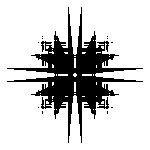Kratom, a traditional Southeast Asian plant with health benefits including muscle relaxation, can be an effective addition to a daily self-care routine. For optimal relaxation effects, it's important to select the right dosage and strain like Bali or Maeng Da, known for their relaxing properties that help ease muscle tension and discomfort. Enhancing the experience by creating a serene environment conducive to relaxation can further amplify Kratom's benefits. Additionally, incorporating self-care activities such as stretching, yoga, or meditation alongside Kratom use can promote better overall wellness. It's crucial to follow recommended guidelines and consult with a healthcare professional before adding Kratom to your regimen, especially for those with health concerns or on other medications. Kratom's muscle relaxation properties, due to its alkaloids like mitragynine and 7-hydroxymitragynine, engage with opioid receptors to potentially offer pain relief. Mindful and responsible use of Kratom in conjunction with a holistic self-care approach can lead to improved mental, physical, and spiritual well-being.
Embarking on a journey toward wellness can be both transformative and rejuvenating. This article delves into the art of self-care, with a special focus on incorporating Kratom into daily routines for optimal muscle relaxation. Explore how Kratom, a naturally occurring compound, can enhance your self-care practice, offering benefits for well-being and pain management. As we navigate through the sections “Crafting Your Daily Self-Care Routine with Kratom for Optimal Muscle Relaxation,” “Integrating Kratom into Your Self-Care Practice for Enhanced Well-Being and Pain Management,” and “The Role of Kratom in Self-Care: Balancing Mind, Body, and Spirit Through Muscle Relief,” you’ll discover the multifaceted role Kratom plays in promoting a harmonious balance between mind, body, and spirit. Join us as we explore this enlightening topic, ensuring your self-care regimen includes the muscle relaxation benefits of Kratom for a more holistic approach to health and happiness.
- Crafting Your Daily Self-Care Routine with Kratom for Optimal Muscle Relaxation
- Integrating Kratom into Your Self-Care Practice for Enhanced Well-Being and Pain Management
- The Role of Kratom in Self-Care: Balancing Mind, Body, and Spirit Through Muscle Relief
Crafting Your Daily Self-Care Routine with Kratom for Optimal Muscle Relaxation

Integrating Kratom into a daily self-care routine can be a beneficial practice for those seeking optimal muscle relaxation. Kratom, a plant originating from Southeast Asia, has been traditionally used for its potential health benefits, including muscular relief. When crafting your self-care routine with Kratom, it’s important to consider dosage and strain selection based on your specific needs. For instance, strains such as Bali or Maeng Da are often favored for their relaxing properties that can alleviate tension and soothe aching muscles. To ensure a restorative experience, establish a calming environment where you can unwind without distractions. This environment, paired with Kratom’s effects, can create an ideal setting for relaxation, allowing your body and mind to decompress after a long day. Always adhere to recommended guidelines and consult with a healthcare professional when incorporating Kratom into your self-care regimen to maximize its benefits and promote overall wellness. Additionally, complement this practice with other self-care activities like stretching, meditation, or a warm bath to enhance the muscle relaxation experience.
Integrating Kratom into Your Self-Care Practice for Enhanced Well-Being and Pain Management

Incorporating Kratom into a self-care routine can offer significant benefits for individuals seeking enhanced well-being, particularly in the realm of muscle relaxation and pain management. Kratom, derived from the leaves of the Mitragyna speciosa tree native to Southeast Asia, has been traditionally used for its soothing properties. When integrating Kratom into your practice, it’s important to select a reputable vendor and choose the right strain for your needs. For instance, strains such as Bali or Maeng Da are known for their potent analgesic effects, which can alleviate chronic pain and induce deep muscle relaxation. It’s crucial to adhere to appropriate dosing guidelines to ensure a safe and therapeutic experience. Additionally, combining Kratom with other self-care practices like yoga, meditation, or massage therapy can amplify its benefits, promoting a holistic approach to health and tranquility. Always consult with a healthcare professional before adding Kratom to your regimen, especially if you have existing health conditions or are taking other medications. By doing so, you can harness the pain-relieving and relaxation properties of Kratom to complement your self-care efforts for a more balanced and harmonious lifestyle.
The Role of Kratom in Self-Care: Balancing Mind, Body, and Spirit Through Muscle Relief

Integrating Kratom into self-care routines can offer a holistic approach to balancing the mind, body, and spirit, particularly through its potential for muscle relaxation. Kratom, derived from the leaves of the Mitragyna speciosa tree, has been traditionally used in Southeast Asia for its various health benefits. For individuals seeking relief from muscular tension and discomfort, Kratom can play a pivotal role due to its alkaloid profile, which includes mitragynine and 7-hydroxymitragynine. These compounds interact with the body’s opioid receptors, potentially providing analgesic effects that help in easing muscle tightness and promoting relaxation.
When incorporating Kratom into a self-care regimen, it’s crucial to approach its use with mindfulness and responsibility. Users should be aware of the appropriate dosage and strain for their specific needs, as the effects can vary based on individual physiology and the specific type of Kratom consumed. Additionally, it’s important to combine Kratom with other self-care practices such as stretching, yoga, or meditation to enhance overall wellness. By doing so, one can harness the muscle relaxation properties of Kratom while also nurturing the mental and emotional aspects of self-care, leading to a more balanced and harmonious state of being.
Incorporating Kratom into a daily self-care routine can significantly contribute to muscle relaxation, thereby supporting overall well-being and pain management. This article has explored the nuances of integrating Kratom thoughtfully into one’s self-care practices, emphasizing its potential to harmonize the mind, body, and spirit. By adhering to a self-care routine that includes Kratom for optimal muscle relaxation, individuals may find enhanced relaxation and a better quality of life. It is clear that Kratom can be a valuable addition to one’s self-care strategies, provided it aligns with personal health goals and is used responsibly under the guidance of a healthcare professional.






